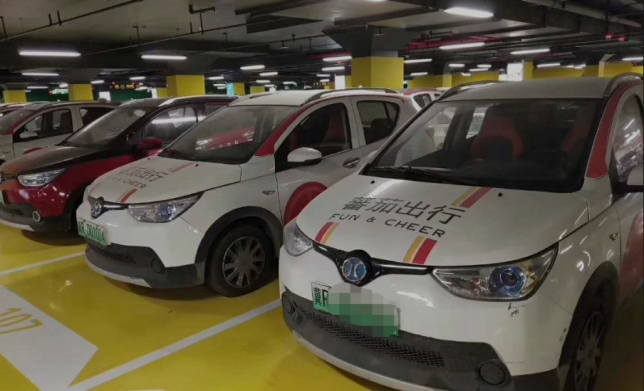Electric Car “Hustlers” Facing Tough Time
Author | Qiu Kaijun
Editor | Zhu Shiyun
Lao Tian is an electric car “hustler”.
This group of “hustlers” doesn’t race on the road. Instead, they repeatedly share messages like this on WeChat:
XX electric car model, battery life XXX km, attractive price, available in all colors, with immediate delivery and transfer anywhere in the country…
They either purchase a batch of used electric cars or have channels to acquire second-hand vehicles. After receiving payment from dealers or buyers, they will arrange for a shipping company to “fly” the cars to the buyer’s location.
Lao Tian has been “hustling” for three to four years and has sold over 10,000 used electric cars, earning a decent amount of money. However, he told Electric Vehicle Observer that after finishing his current batch, he plans to switch careers.
This is because the main source of electric cars, the car-sharing companies renting out electric cars, has almost depleted their vehicle inventory.
In China, electric car-sharing companies emerged in 2013, skyrocketed in 2015, and started struggling in 2018, with many undergoing painful transformations… Now, their vehicle assets are almost completely sold, finally reaching the moment of liquidation.
Can they make a comeback?
Bankruptcy or Transformation
“5000 Sales, RMB 75 Million Revenue, through Wind and Waves to Create Glory.”
This is the headline used by Mafige Used Car to summarize its 2021 performance.
Mafige Used Car is an operated second-hand car company under Huaxia Travel, a travel platform of the Beijing Automotive Group, which includes car rentals, urban logistics, official vehicles, and ride-hailing services.
Huaxia Travel has a large fleet of electric cars, which were mostly used for car-sharing. At one time, the Beijing Automotive Group had at least five car-sharing electric vehicle platforms: Mafige Travel, Qingxiang Travel, GreenGo Rental, Beijing Travel, and Hengyu New Energy, which were later consolidated under Huaxia Travel and unified under the Mafige brand, with a total of over 40,000 electric cars.
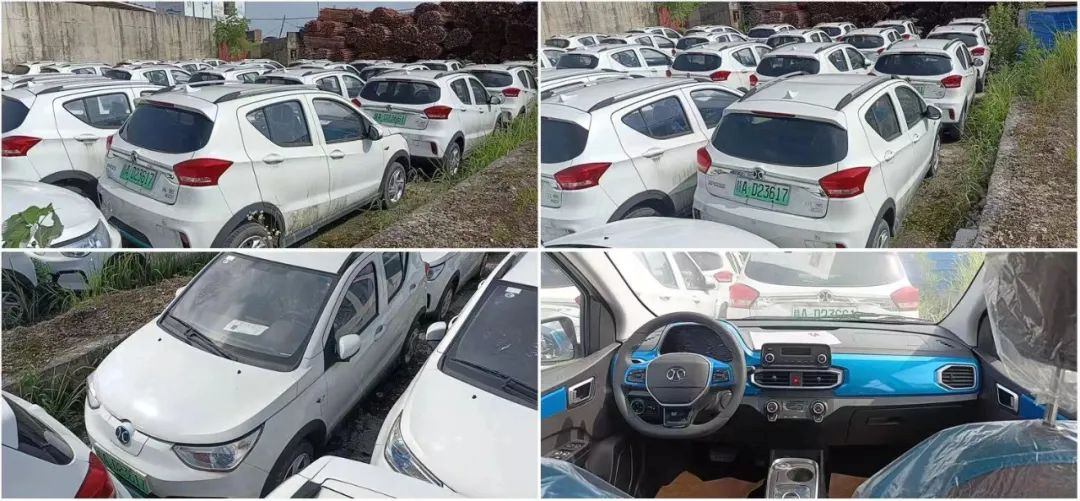
Mafige Travel operates in more than 50 cities, but they are only still operating car-sharing in a few cities, such as Tianjin, Langfang, Changsha, and Guiyang, with even the Beijing headquarters no longer providing the service. In many cities, they mainly promote daily or long-term rentals.
Since there are a large number of car-sharing vehicles that need to be disposed of and funds to be recovered, Mafige Used Car took on this important task.
In addition to selling 5,000 cars in 2021, the company has also organized more than ten second-hand electric car auctions since the beginning of 2022. In total, 2,990 cars were sold, with the main series being the EC and EX series, and a few were logistics vehicles.Both EC and EX are micro cars, the main models for car-sharing.
Apart from Mofan Travel, other car-sharing companies are in a similar situation.
EVCARD, the once-largest electric car-sharing company with over 50,000 vehicles, now has only 20-30,000 vehicles left, mostly converted to long-term rentals. The car-sharing business rented by the minute has basically been shut down.
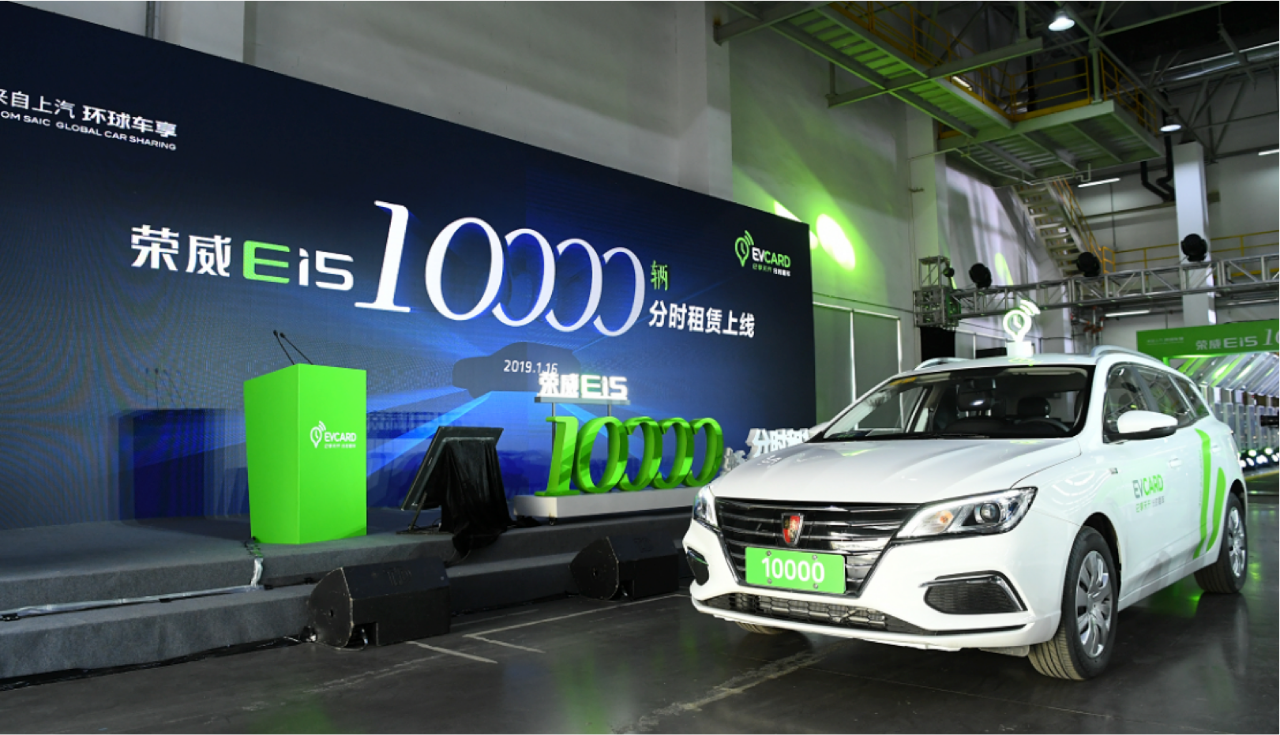
Another car-sharing giant, GOFUN, had nearly 50,000 vehicles at its peak, half of which were self-owned. Currently, GOFUN has also given up car-sharing in many cities and shifted its focus to daily and long-term rentals. It has also sold off many of its vehicles.
A car-sharing operator in northern China said that half of their fleet has been converted to long-term rentals, some old vehicles have been disposed of, and the remaining cars are being used for various operations. If there are long-term rental demands, they will be taken offline from the sharing platform and converted to long-term rentals. If not, they will be parked in the parking lot. Except for a few major locations, they are not actively deploying new vehicles.
Currently, the only remaining electric car-sharing company with significant scale is WARMCAR, based in Liuzhou. The company mainly operates the E100 from SAIC-GM Wuling. Industry insiders predict there are less than 10,000 vehicles still in operation.
WARMCAR once expanded to nine cities, including Guangzhou and Qingdao, but now only four cities, Liuzhou, Nanning, Sanjiang, and Zhongshan, still have car-sharing services available.
Overall, electric car-sharing companies have either shut down, transformed into long-term or daily rental businesses, or only used as supplementary operations. The few companies that remain in the car-sharing business are either backed by strong parents companies, or have experienced significant shrinkage.
In addition, there are some fuel-powered car rental companies that are still in the car-sharing business, such as LinkTour Cloud and Fengniao Travel. LinkTour Cloud was established to digest the stock of vehicles from the Guevara brand but has not performed well. Fengniao Travel’s Business Director, Li Hui, told EV Observer that the company has been hit hard by the epidemic and reduced its fleet from 5,000 to about 3,000 vehicles. It is operating in Wuhan and Xi’an, and not only providing car-sharing, but also long and short-term rentals. Daily revenue for fuel-powered vehicles is around RMB 50-60 per vehicle. Therefore, a daily yield of over three orders can be profitable. “We were just breaking even or marginally profitable when the epidemic was under control.”
“Car-sharing is no longer viable. Even if you’ve taken cars under the pretext of car-sharing in the past, either you’ve sold them or you’ve become a long-term rental,” said Wang Wei, Chairman of JY Capital, which once provided financing and leasing services to electric car-sharing companies.## Dissipated in the Second-hand Car Market
How many electric cars are there in the car-sharing industry?
The latest figure was disclosed by the Ministry of Transportation in October 2020 – “the number of shared cars put into operation exceeded 200,000”.
However, according to Lao Tian’s estimate, there are approximately 350,000 electric cars in the car-sharing industry. And these 350,000 electric cars have gradually entered the second-hand electric car market.
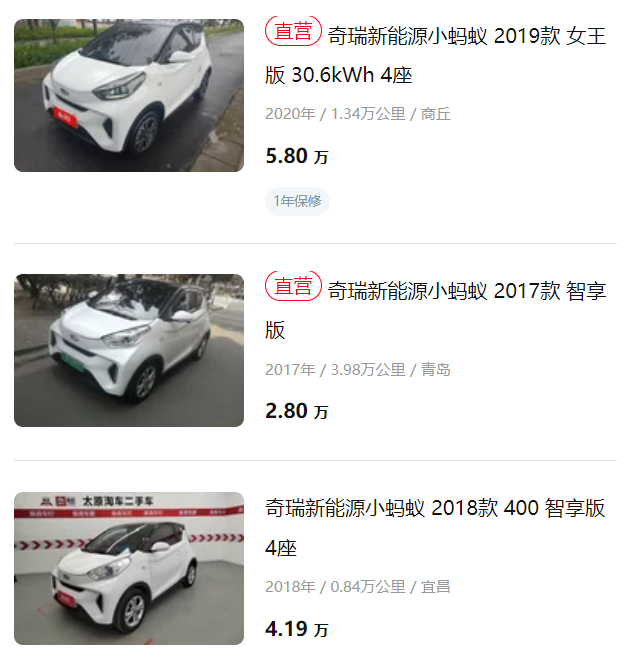
“In recent years, tens of thousands of cars have been released every year. Last year, just GOFUN alone had to be over 10,000, and Global Car Share also had to be over 10,000, so there were probably around 50,000 vehicles consumed for the whole year.” Lao Tian said.
Many of Lao Tian’s downstream dealers are the original dealers of low-speed electric cars, and there are also second-hand dealers of traditional fuel cars.
“(Electric) used cars have saved some dealers of old-generation cars.” Lao Tian said, because the country regulated low-speed electric cars, low-speed electric car dealers originally had to transition from motorcycles and electric two-wheelers. They had already lost their original businesses and devoted themselves entirely to the low-speed four-wheel industry, only to face Waterloo and be forced to transition to the second-hand electric car field.
There are also many car dealers who have come from operating traditional second-hand fuel cars. Recently, because oil prices have risen, “9 out of 10 car dealers are losing money, and even 10 out of 10 are losing money, so they have to turn to electric cars.”
Lao Tian said that the problem with second-hand electric cars is the warranty. “Some car manufacturers and 4S shops intentionally or unintentionally default on their obligations, which makes buyers of second-hand electric cars a headache.”
The original low-speed electric car dealers didn’t understand brands, didn’t understand marketing, but they weren’t afraid of hard work, relying on their previous experience in maintaining low-speed electric cars to fix cars. “They have survived through this industry these past three years.”
The end customers are partly users who upgraded from low-speed electric cars. They are worried that buying a new car will depreciate quickly, so buying a used car is much better. “Buying a new car costs over 80,000 yuan, which will still be worth only 40,000 yuan after three years. But buying a used car for 40,000 to 50,000 yuan that can be driven for three years could still be resold for two or three thousand yuan less, saving you 20,000 yuan.”
This year, due to the rise in raw material prices and new car prices, second-hand electric cars have also increased in price. For example, the Chery Ant model that cost about 23,000 yuan last year is now priced at around 36,000 yuan. The Beijing Automobile EC series has also increased by about 10,000 yuan compared to before. Another factor is that “there are fewer cars this year, and shared cars have all sold out. Except for Huaxia Chuxing, the cars of other companies have been sold almost evenly. Only a small number remain scattered.”
“Buying cars is particularly expensive, there is no profit. I’m ready to change my line after finishing this batch,” Lao Tian said.
Is there still a chance for car-sharing?## Will Electric Car Sharing Make a Comeback?
Fengniao Xingxing is also considering entering the field of electric vehicle sharing, but they are considering a model in which the vehicles and batteries are separated.
Can electric car sharing still work?
“Car sharing is obviously losing money.” Jixue Hong, a professor at the School of Economics and Management at North China Industrial University, told Electric Vehicle Observer. Jixue Hong has long studied shared cars and is the chief editor of the Blue Book of China’s Shared Travel Development Report.
“The cost of vehicles, charging, dispatchers, and parking fees is too high. At least five or six orders are needed for each vehicle per day, but the best cities can only do about three orders, making it impossible for any city to make a profit.” Jixue Hong said.
“If we talk about profitability, it’s just reducing the cost of management and even the cost of cars, creating a template, and then financing it. Overall, it’s still losing money. The larger the scale, the more loss.” He said.
A city manager of EVCARD also told Electric Vehicle Observer that the cost of electric car sharing is too high. Compared with ordinary car rental, although the vehicle purchase cost is high, the operating cost is much higher.
“The rent of the network node is terrible.” Car sharing pursues convenience. Vehicles should be within walking distance, which requires more network nodes than rental companies such as Yihai and Shenzhou, and they need to be more convenient, so the rent is higher.
An operator of a shared car rental who has joined Gofun said that since the places where parking is allowed all over the country began to charge parking fees, shared car rentals cannot be done anymore. “Even the parking cost of small county towns is very high.”
The aforementioned manager of the EVCARD also said, “You need to keep a huge operations team to deal with vehicle dispatching. Especially when doing car sharing, a small scale cannot operate effectively, and a large scale will lead to obvious tidal effects, and the management cost will increase significantly.”
“The difficulty of maintaining a car sharing model is also largely related to the quality of the people in the country.” Said the manager. During the process of using cars, vehicle hygiene may be very bad, and vehicles may be damaged due to collisions. However, in order to improve turnaround efficiency, it’s impossible to check every order, and it’s impossible to trace or hold accountable. User’s penalty fines and vehicle damage become the operator’s hidden costs due to the inability to obtain evidence and pursue responsibility.
The model of car sharing is difficult to maintain, but it is a good way for car companies to consume electric vehicles on a large scale. Lao Tian frankly stated: “Car sharing is a small trick under a beautiful cloak, and even includes fraudulent claims.”
Now, the dust has settled on electric vehicle sharing. Some car companies that have taken advantage of car sharing have either been blocked in the subsidy application process, or have encountered market punishment when electric vehicles entered the private consumption era.
So, will electric car sharing make a comeback in the future?Ji Xuehong believes that the business model of car-sharing is ahead of its time and automated driving technology, at least at level L4, is necessary to provide a satisfactory experience for consumers.
The EVCARD city leader mentioned above believes that car-sharing still has a bright future. He also believes that if the issue of automated driving can be resolved, the convenience for users will be greatly improved, and cars can be summoned anytime and automatically returned afterwards without any scheduling issues.
“Nowadays, urban roads are congested, parking is difficult, and there are many problems. Automated driving can greatly reduce the use of environmental resources, improve the comfort of human driving, and lower the operating costs of enterprises. At this point, its profit model will be established.”
Automated driving is generally believed to be still far away from realization. However, the travel service of automated driving is a very different business model from the current car-sharing operations, and is the area where Google, Baidu and, in the future, Tesla and XPeng will explore, known as ROBOTAXI (automated driving taxis).
In the short term, Wang Wei believes that there is an opportunity for electric vehicle car-sharing platforms to shift towards providing electric vehicle test-drive experiences. There are already a lot of new energy vehicle models available from new energy vehicle companies, however the current test-drive model cannot resolve all issues. “If we can simplify the operation and technology capabilities of car-sharing, we can provide deep test-drive experiences for new energy vehicles, which I believe has a certain vitality.”
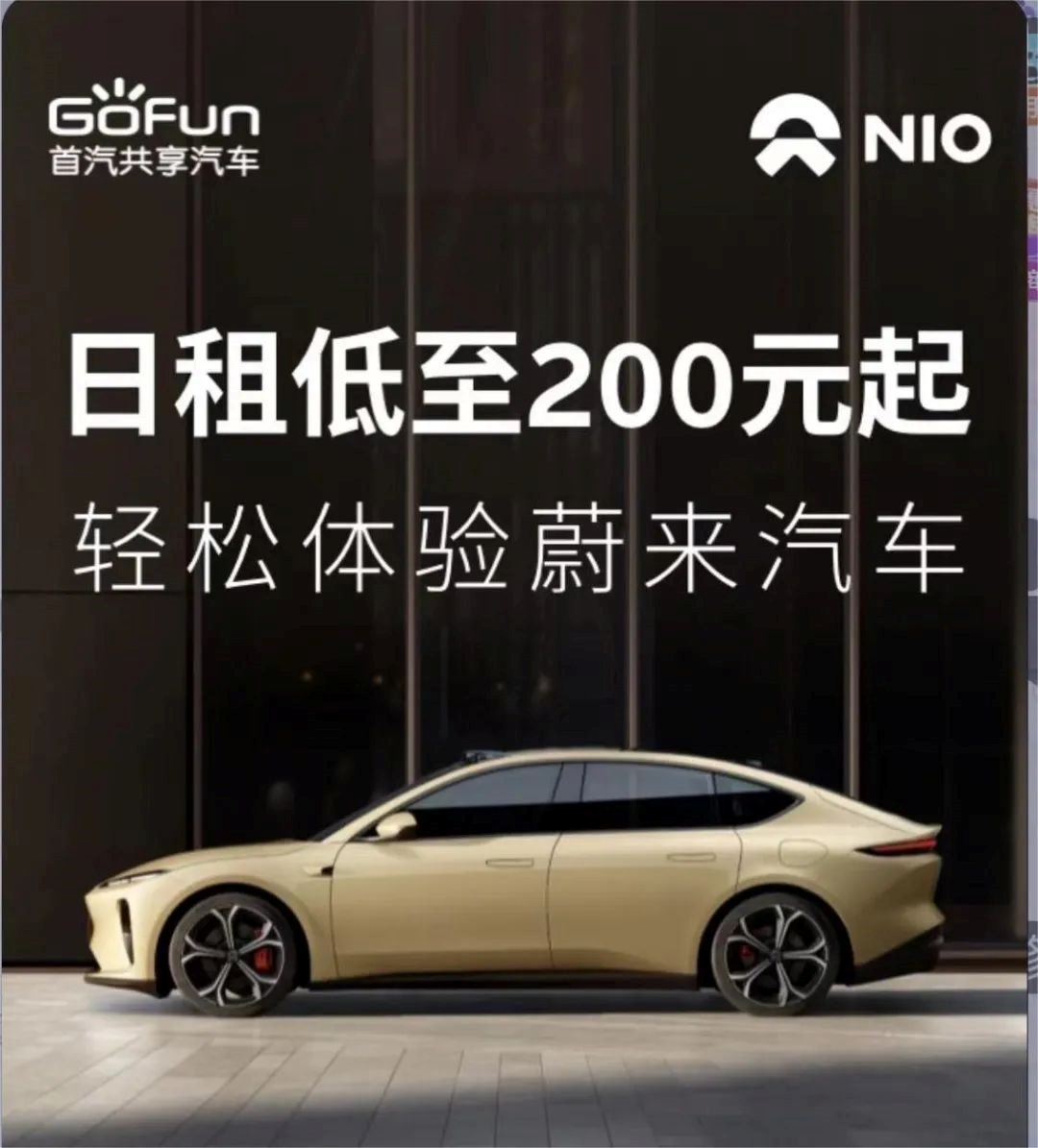
Indeed, Electric Vehicle Observer has learned that some car-sharing platforms have launched electric vehicle test-drive products, and some from the car-sharing industry have even begun to start subscription services for new energy vehicles.
Perhaps the venture of electric vehicle car-sharing might have to bear fruit elsewhere.
This article is a translation by ChatGPT of a Chinese report from 42HOW. If you have any questions about it, please email bd@42how.com.
